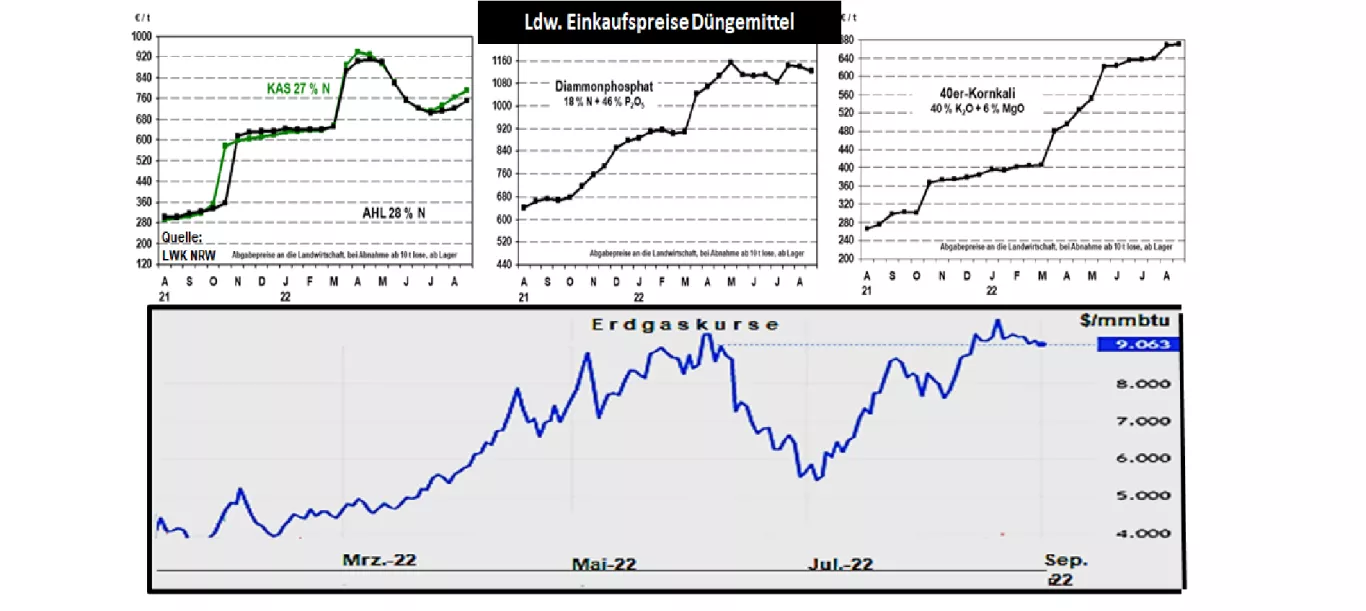Fertilizers: 2022/23 will be expensive The typical seasonal decline in nitrogen prices after the 2022 main fertilizer season was short and weak. Internationally, urea prices briefly fell from over $950 to $600/t. The agricultural purchase prices for KAS fell from over 900 €/t to almost 700 €/t and were already heading towards 800 €/t again in July. The background to this is the rising price of natural gas , which after a brief summer relapse to around 6,000 at the June/July transition, rose again to over $9,000/mmbtu in the following month. Cuts in Russian gas supplies were the main driving factor. In nitrogen production, the gas energy accounts for almost 90% of the production costs. Some of the leading N fertilizer manufacturers have reduced their capacities in Europe completely or by up to a third. In addition to the energy costs, there are also the internationally increased transport costs .As a heavy load, fertilizer is preferably transported on the cheaper waterways. Due to the persistent drought, however, the capacity of the inland waterways is severely limited. There is still time until the main fertilizing season, but the scope is becoming narrower. In the case of phosphate and potash fertilizers , the price increase continued almost unabated. The main background are the deliveries from Russia and Belarus , which are subject to sanctions. Both countries together have so far accounted for more than 40% of the global potash trade. For Belarus in particular, the transport routes via the Baltic Sea ports are cut off. Russia's market share is similar, but still has its own port locations. For the coming years, 70% of the expansions in potash extraction were located in Russia. However, given the sanctions on financial transfers, significant cuts are expected. Investments in Canada's potash deposits will not be able to deliver until 2026. In the past, Russia has achieved trade shares of between almost 10 and 15% with rock phosphate, MAP and DAP . The sanctions for financial transfers cause problems.


